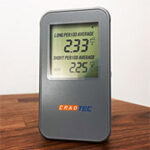The CradTec PRM-02H smart radon detector is an active measuring device which is powered by batteries and it can quickly provide the short-term radon level in your house, as well as a more accurate longer-term value depending on the amount of time it was installed.
| CradTec PRM-02H | |
|---|---|
| Amazon.com | Check Offer |
The short-term detection is done in about 4 hours if the radon level is high, but, if it’s within the safe limits, you should wait about 24 hours to get the first more accurate reading. The concept is very similar to the AirThings Corentium Home 223 and even the design doesn’t differ that much, both detectors sporting a black and white display with no backlight and both proving to be very flexible in regards to the place they can be installed.
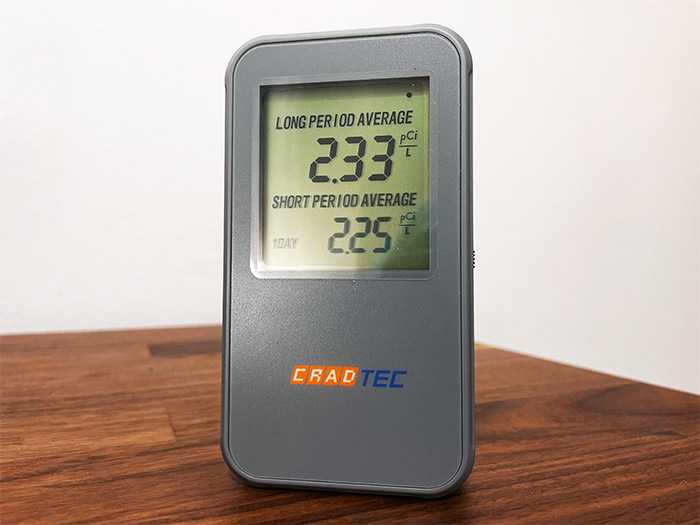
Indeed, being compact and relying on batteries does give an advantage in terms of location, but how does it fare when compared to the more traditional means of detecting radon? The passive tests are time proven methods for checking radon levels which do not require access to a power source and they’re great for short-term testing. The advantage that an active radon detector can offer is continuous detection and, depending on the brand, you can also get an accurate view of the radon level spikes over a very long period of time.
The CradTec PRM-02H is advertised as being smart, so does that mean that it can be connected to a WiFi network and that it has an app? No, it just seems to be a way to show that it’s more than just the passive detectors and that you get short and long-term readings on the screen. That being said, I let the device sit in my home for about four days, so let’s see how well it performed.
Note: The CradTec PRM-02H is, at the moment, not EPA approved, neither does it carry the AARST or the NRPP certifications.
The Design and Build Quality
The CradTec PRM-02H smart radon detector has a rectangular plastic case covered by a gray matte finish on the front and a black finish for the rear panel. The device measures 4.7 x 2.5 x 1.0 inches (12.0 x 6.3 x 2.5cm) and it weighs 0.55 pounds, so it’s very similarly sized to the AirThings Corentium Home 223.
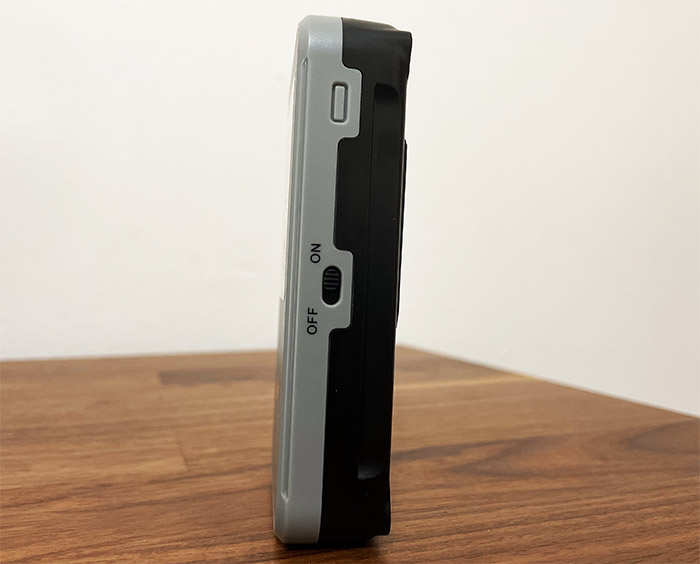
On the front, the top half of the device is covered by a display and, by default, you get to see the daily average and the long-period detected value. You can see more info by pressing the Mode button from the rear side and that’s also the place where you can press the Reset button in order to return the CradTec PRM-02H smart radon detector to its factory default settings. One complaint would be that the buttons are small and pretty much impossible to press without a tool.
And I understand that this is suitable for a Reset button, but it gets annoying when you want to switch through the various data using the Mode button. In between the aforementioned two buttons, there is a plastic piece which can detach the cover that protects the battery slot. The CradTec PRM-02H smart radon detector needs three AAA batteries and no, you don’t get any in the package, you have to use your own.
It’s worth mentioning that you can use the provided screws to hold the plastic piece which opens the battery slot into place.
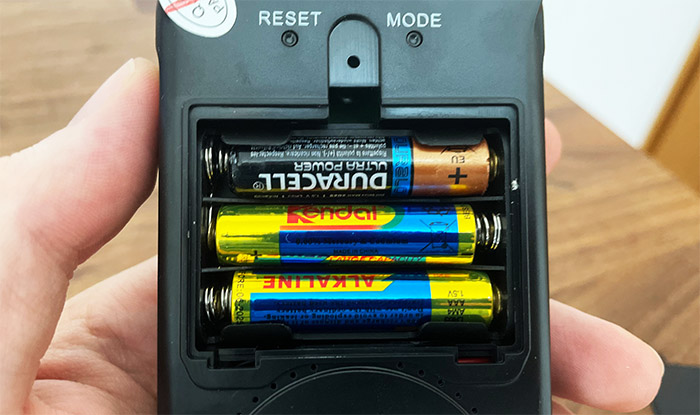
Underneath this slot, there is a circular piece surrounded by punctured holes – make sure to not cover them because this is the place where the air needs to enter the sensing chamber and reach the built-in radon detection sensor. Lastly, there’s an On/Off switch on the side.
The Display
As I mentioned in the intro, we’re dealing with a fairly large black and white display that is always on and does not have a backlight which makes sense in order to conserve the battery life of the device. And, the default values are displayed in pCi/l, but if you press the Mode button once, it will switch to Bq/m3. You can press it again to see the days behind the Long Period Average. I noticed that by default, the CradTec PRM-02H smart radon detector will not show the battery life amount that’s left.
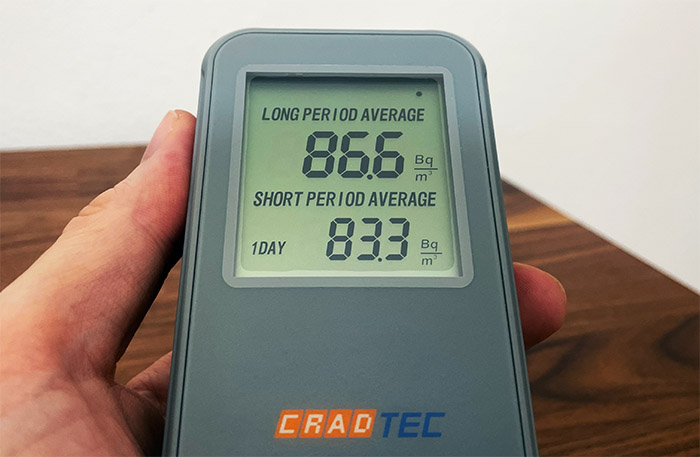
And it seems that when it gets low, an icon will appear on the top left corner to let you know you need to insert new batteries. Also, in case the measured values are too high, the display will show a fan icon to let you know you should take action and decrease the radon levels in your home. I suppose a small beeper would have been a nice complementary system to notify the people of high radon levels, so maybe we will see something like this added to future releases.
The CradTec PRM-02H in action
After turning on the radon detector, a flashing line appeared on the display and I left the device do its thing after being placed at the lowest level of the house. After 24 hours, I could see the reading and it showed about 2.4pCi/L which is on the high side. I left it sit for more than four days and, as I anticipated, the detected radon level dropped to 2.34 pCi/L and I expect further drops because the reading is very much dependent on the humidity in my house.
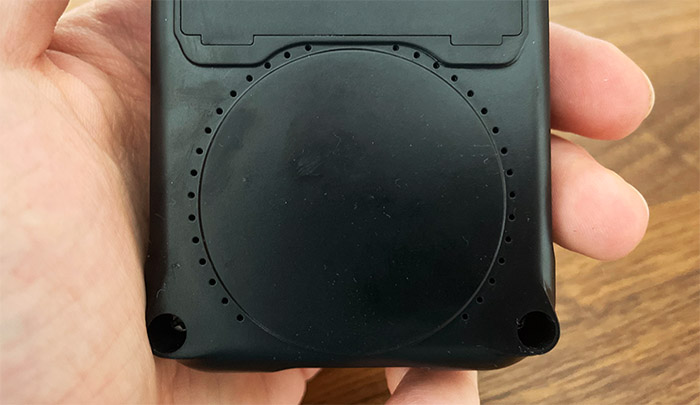
After lowering it the last day, the average appeared to be 1.88pCi/L. So, let’s talk about the accuracy of the active radon detectors. Yes, a high humidity will have a significant impact on the reading which is why it’s very important to keep the humidity as low as possible – the radon detector manufacturers suggest to use a dehumidifer in the room where the device will be positioned if you want to have accurate radon level detection. I live in an area with a very high humidity all year long, something between 70 and 80% pretty much all the time and, as expected, the humidity in the house is also usually high.
So, the first three days, the humidity was about 70%, but the fourth day, which showed <2pCi, the humidity was artificially lowered to about 55%. The publicly available graph shows that the area where the house it located should have radon levels between 0.44 and 1.73pCi/L, so, taking into account the high humidity in the house, it does seem that the CradTec PRM-02H is fairly accurate and I am sure it will get even better long-term. I would have liked some access to a long-term graph to see the fluctuations based on the humidity and the outside weather conditions, but, for now, the display info is the best we get.
The Conclusion
Considering the risks of radon exposure, it’s wise to invest in a system to let you know when the radon levels get too high, especially if you live in an area that’s known for being high risk (you can check the local radon map online). The CradTec PRM-02H smart radon detector was built to continuously check the radon level in the room that’s positioned and, as long as you keep the humidity in check, you should get fairly accurate results.

Mark is a graduate in Computer Science, having gathered valuable experience over the years working in IT as a programmer. Mark is also the main tech writer for MBReviews.com, covering not only his passion, the networking devices, but also other cool electronic gadgets that you may find useful for your every day life.

